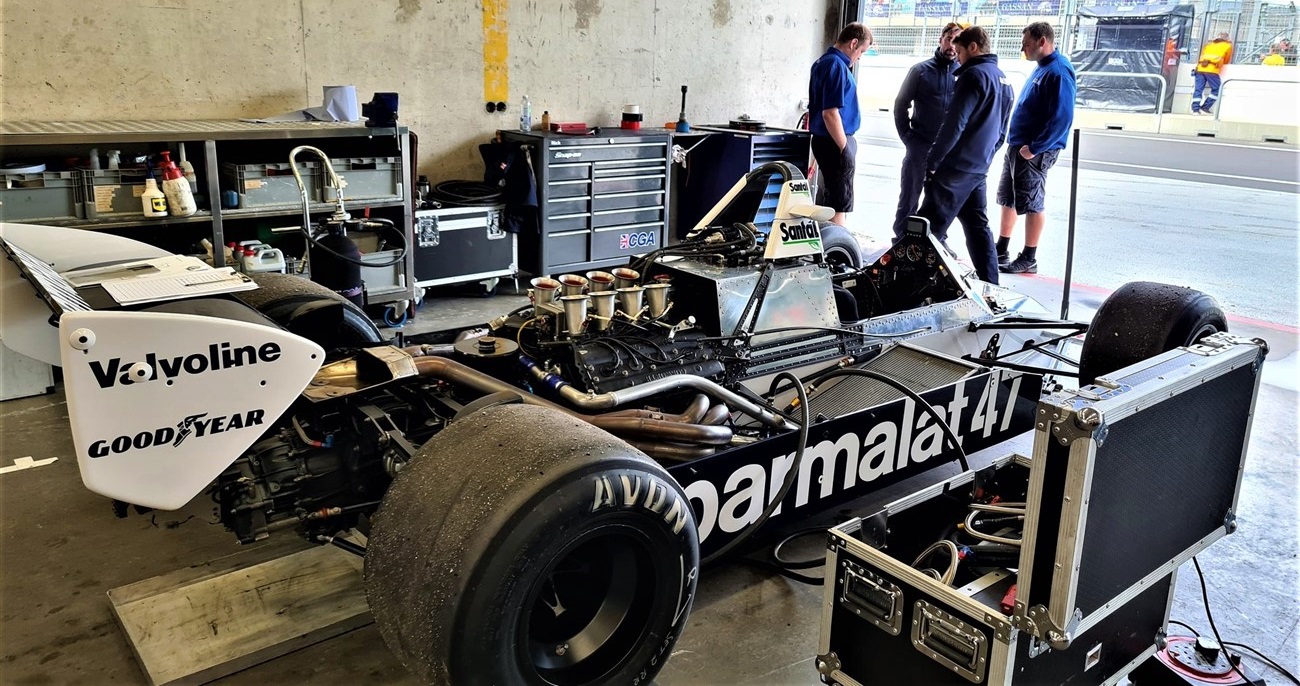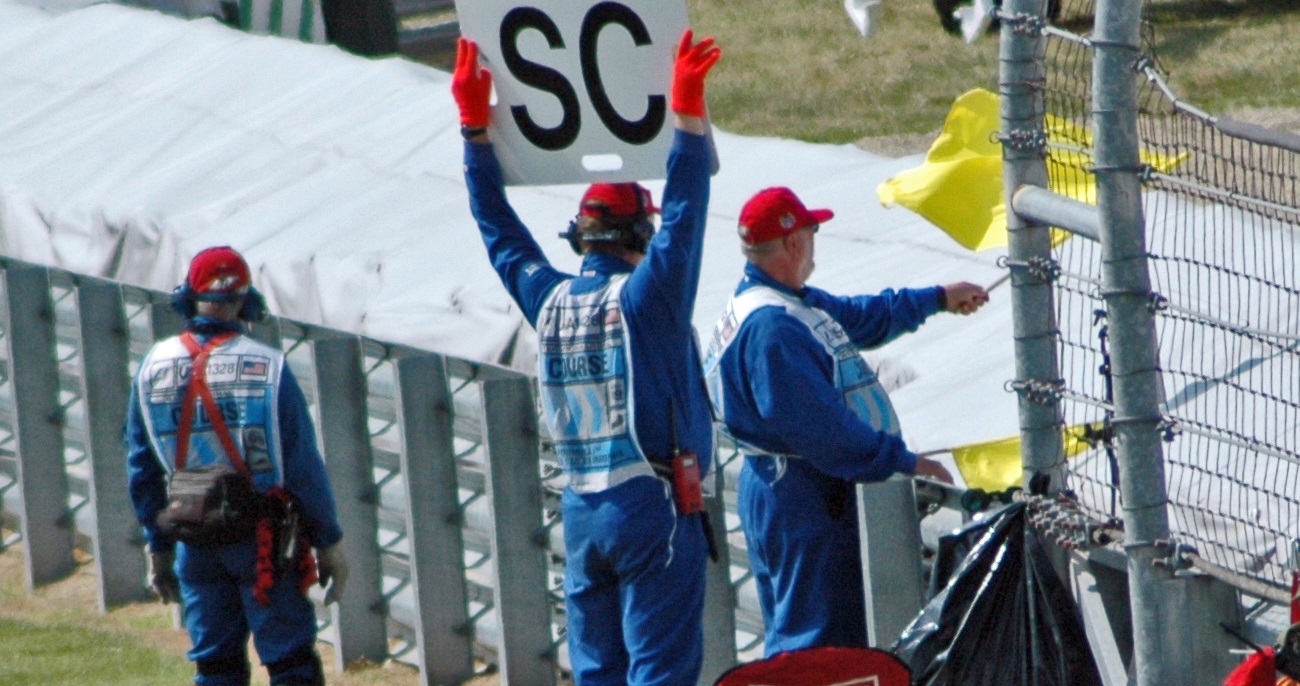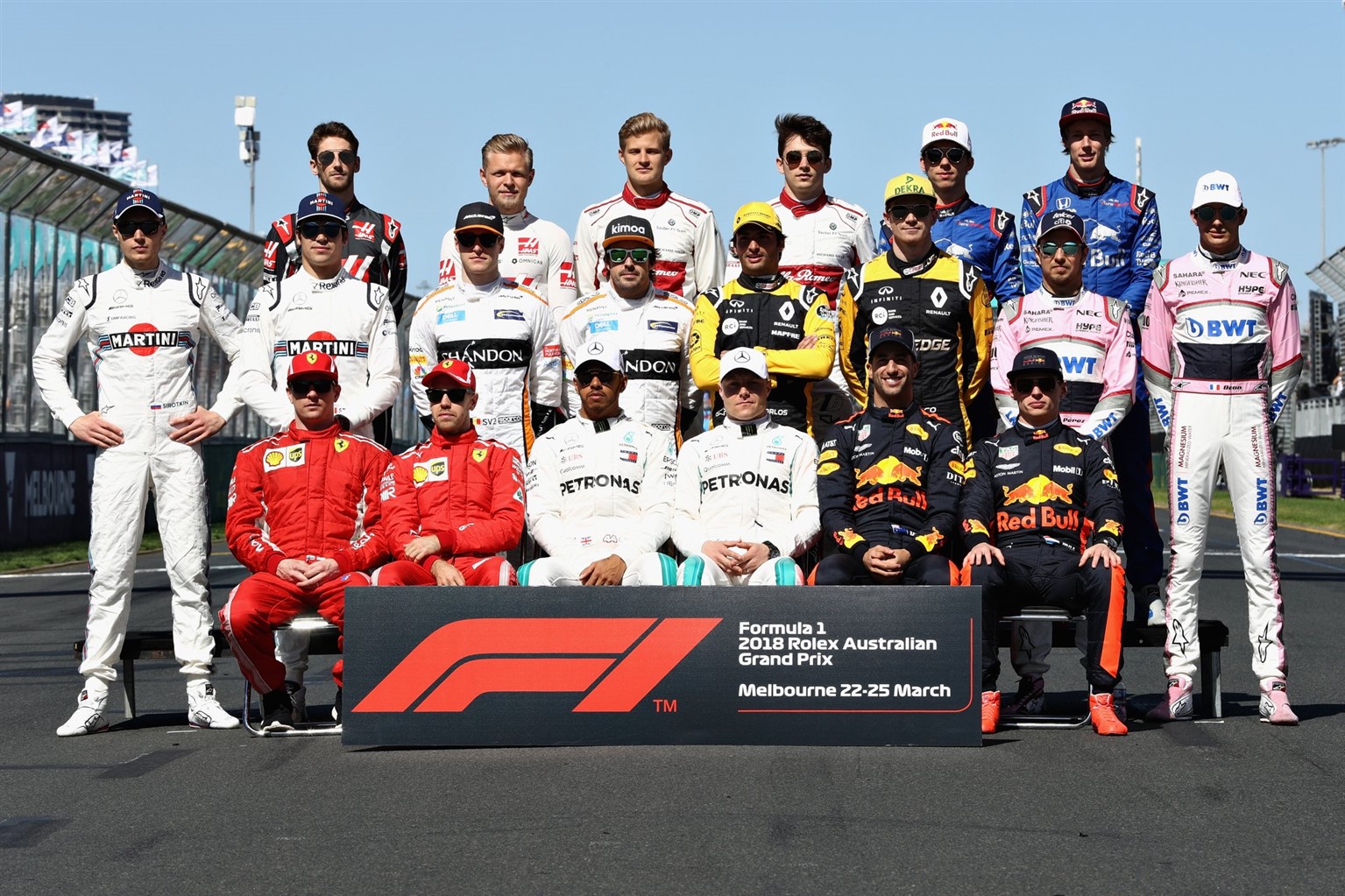You might say that the Turbo era in the 1980s meant the downfall to some of the best teams the Formula One had at that point. Team Lotus is a good example, winning the championship in 1978, to only three podium finishes in 1988. Besides them, also Tyrrell is an example of the downfall of the top teams with 1984 as a pure disastrous year for the team. However, there is one team that takes the biscuit namely, Brabham, whose official name in the Formula One was Motor Racing Developments. A name deliberately created by Jack Brabham and Ron Tauranac in the 1961. Brabham managed to disappear from the grid in 1988 only to return in 1989 and disappear permanently during the 1992 season.
What was going on with the Brabham team in 1987 that let them made the decision not to appear on the grid in 1988? To answer the question we should look back to the beginning of the turbo era. Since 1972, Bernie Ecclestone was the owner of the team. However, as a member of the FOCA he became more and more involved with the running of the sport. In 1978 he became chief executive from of the FOCA from that point on he would become the supremo.
In the early years of the 1980s, Brabham was successful on the grid. While not winning the constructor title Nelson Piquet became twice the World Champion with Brabham. The first time in 1981 with the BT49C powered by the atmospheric Ford DFV V8 engine. The second time with the BT52 powered by the BMW turbo engine in 1983. However, after 1984 when the team finished second in the constructors championship the team went more and more in decline as Bernie was more involved with the FISA then his own team. It seems that this played a role on the results of the team.
The 1986 season was the worst season so far for the team. Gordon Murray, besides most of the time running the team as well, designed the Brabham BT55 a beautiful car however useless on the track. Riccardo Patrese only scored twice a point with the car while Elio de Angelis passed away when he had a terrible accident with the BT55 during a test session at Paul Ricard. Derek Warwick, who replaced de Angelis, failed to score points with the car. His best result was a seventh place during the German Grand Prix that year.
There was another problem for the team. In August 1986, BMW announced their departure from the Formula One. As per 1987, there were restrictions on the turbo engine, which would be banned per 1989. BMW announced that 1986 was their last season. Interestingly, they had contract with Arrows and Brabham that continued until 1987. For 1987, Brabham designed their BT56 around the upright engines from BMW, as Bernie held the German company to their contract. However, Arrows, who used the Megatron engines (batched BMW), were to use the upright engine. While Brabham was doomed to use the laydown version of their engine. Arrows finished even above the team in 1987. It seems that Bernie lost affection with his own team and wasn’t interested anymore.
During the season, there were some rumours that the Brabham team was for sale as Bernie Ecclestone was to focus completely on running the Formula One. There were some name circulating at that time who were possibly interested in a buyout of Bernie. His name was the Spaniard Jesus Gil who negotiated a couple of months only to leave empty handed. After the Australian Grand Prix at Adelaide Bernie announced that, the team was not for sale anymore. He also stated that there was a chance that Brabham would not appear on the grid in 1988.
It all depended on a reliable engine supplier. While it was possible to use the laydown BMW configuration the team was not look into it. There were several rumours going in in November. It was spoke that Bernie Ecclestone and Mansour Ojjeh were negotiating a contract for 1988. Ojjeh owned the TAG Porsche V6 turbo engines. As McLaren discard the TAG engines in favour of Honda-power per 1988 there was a possibility for Brabham to sign a deal. This never happened. It seems that there have been for a short while talks with Judd to power the team like Williams did for 1988.
Neither this happened. Other rumours in Italy stated that Brabham would take a sabbatical year and lay there focus for 1988 on designed a Pro Car for Alfa Romeo. While other media stated they would focus on a Pro Car for Renault. With both rumours starting that, Brabham would return in 1989 in the grid either powered by an atmospheric Alfa Romeo or Renault engine.
Williams on the other hand was look at Riccardo Patrese as their second driver next to Nigel Mansell. Which eventually would happen. Josele Garza on the other hand was rumoured, somehow, to race for Brabham in 1988 and if the team would not appear on the grid that year, it would be in 1989. He tested in 1986 already for the team. Eventually Garza would never appear on the grid while he tested a couple of times for Minardi between 1987 and 1989.
What now for Brabham? In January 1988 Bernie Ecclestone still the team owner stated that there was a 50/50 chance that Brabham would stay on the grid. However, this all depended on a suitable engine supplier. The same time, what became a public secret, Brabham started working on the Alfa Romeo 164 Pro Car. Despite no engines and no proper view on a car for 1988 there were rumours that Stefano Modena could sign a deal with Brabham. Despite Josele Garza named before an American was rumoured to sign a contract with the team.
Around the same time there was an insane rumour going that Brabham was interested in the MGN W12 engine from Guy Negre. The engine was tested in 1987 just days before Christmas by the AGS team who used one of their JH22 cars for it. Guy Negre visited the Brabham headquarters according to several sources to discuss an eventually deal for 1988. If the deal would materialise between the both Brabham would appear with a modified BT56 at the start of Brazil. However, it is questionable if any engine would fit in the low-profile BT56. Therefore, the team should make hurry on the design of the BT57. It meant Brabham would miss the first few races. According to the rules, this was not possible, as teams had to take part in all rounds of the championship.
Time was running out for Bernie’s team. In early February, Sergio Rinland who co-designed the BT56 left Brabham for the new Scuderia Italia team from Beppe Lucchini. It only made the rumours louder that Brabham had failed to find a reliable engine supplier and would fail to appear 3 April at the start of the Brazilian Grand Prix at Rio de Janeiro.
The scenario of Brabham missing the season became reality. When the FISA deadline for entries passed, the 31th of January there was no Brabham. The team, without any statement, did not fill in their entry. Therefore, Brabham was disclosed from the season. All the team had working on in Chessington was the Alfa Romeo 164 Pro Car. Were they hoping by building the car they could struck a deal for 1989? Probably, though the FIAT group made clear that Lancia was focusing on rallying, Ferrari on Formula One and Alfa Romeo on touring cars. The reality is that Brabham was in a strange situation with team members accepting offers from other Formula One teams. Some stories state that Bernie sold the team to Alfa Romeo at this point. This is not true. The team only worked on the 164 project.
How about their return on the grid for 1989? That is an interesting story. While rumours popped up that Brabham was eventually working on their return on the grid next season several things were happening. At this time, Bernie Ecclestone was heavily involved with the Formula One and basically was on the same height as Balestere was. There was no time left to run the team again. In addition, Alfa Romeo announced in October 1988 that they were ready for Indycars and Sports prototype racing. Did this mean that Brabham would also appear in the Indycars and Sports Prototype? No It didn’t.
Two weeks before the final race of the 1988 season rumours appear that Brabham will return to the grid in 1989. However, with the backing of Australian funding. Former sponsor hunter Peter Windsor dropped the bombshell at Suzuka when he spoke with a couple of journalists. While more details were asked Windsor was unwilling to disclose further details. It was known that he and Walter Brun, who already ran a Formula One team, had approached Team Lotus for a buyout. Now it seems they were in negotiation with Bernie to purchase the Brabham team from him.
Some more details prior the Australian Grand Prix emerged to the surface. It seemed that Brabham, despite their unraced BT57, were working on the BT58. John Baldwin started designing the car soon t to be joined by Sergio Rinland who came back from Scuderia Italia. While Michele Alboreto, Stefano Modena and Emanuele Pirro were rumoured as drivers. While somewhat insane rumour stated that Mugen-Honda would power the BT58 in 1989.
Weirdly, while not officially announced, Walter Brun told that Gregor Foitek would join his EuroBrun team in 1989. While the drivers for Brabham were yet to be chosen. Therefore, his involvement with Brabham was confirmed. Eventually Bernie Ecclestone announced during the Australian Grand Prix that he had sold the Brabham team to Walter Brun. Or what was left of it. Bernie stated that he would not be involved with the team in 1989. The interesting part was yet to come, as Brabham would soon have again a new owner.
After Bernie and Walter made the buyout public there was a preconference scheduled by Brabham. However, at the last moment Windsor cancelled this. Again unwilling to explain anything the rumours appeared quickly that golfer Greg Norman was luring for the team. While putting pressure on Windsor to give more information he stated that Walter Brun and an unknown Swiss investor were involved. As well Greg Norman. Some even stated that Nigel Mansell was involved in the deal as well this was proven to be false. Greg once told that he would like it to get involved with the Formula One. He believed he could enhance a F1 team through is contact and his international fame. Could he attract sponsor for the team? Who knows, Mansell could probably do the same.
Windsor also stated that sir Jack Brabham was involved. He said that Jack was negotiating a deal with Judd engines for 1989 and onwards. The driver for 1989 would be announced before the end of 1989. While Michele Alboreto was named as one of the drivers, eventually Stefano Modena and Martin Brundle would pair for 1990. However, ownership would soon be handed over. The unknown Swiss investor now had a name Joachim Lüthi. Walter Brun, busy with his own teams in the Formula One and Sportscars sold Brabham after a few weeks. Therefore, Lüthi would become the team owner in 1989.
For 1989, Brabham was back on the grid with the BT58 fitted with the Judd V8. Driven by Stefano Modena and Martin Brundle. The start of the season was so so for Brabham. While doing well in the qualification for the first few races they had to retire. However, in Monaco Stefano Modena finished third while Brundle followed as sixth. It seemed the team was doing well until Joachim Lüthi was arrested for tax fraud in mid-1989. Therefore, the team again switched ownership. This was the third time within a few months.
Eventually several parties who disputed the ownership of the team established Middlebridge Racing. Interesting is that Middlebridge Racing was at some point designing their own Formula One car that seemed to have been build. For 1990, the team with a modified BT58 on the grid later in the season they appeared with the BT59. Gregor Foitek completed the first two races before replaced by David Brabham. Stefano Modena stayed with Brabham finishing fifth at the first race of the season. Those were the only point for the team in 1990. The team had not enough funding to keep their car up to date. Therefore, the team sadly moved to the back of the grid.
For 1991, the team ditched the Judd engine and chose for the Yamaha engines. Which they had tested intensively in 1990 with an adapted Brabham BT58Y. The results seen at Sugo with Katayama behind the wheel of the BT58Y were promising. Martin Brundle and Mark Blundell were the drivers. Only at the end of the season points were scored. With a sixth place by Mark Blundell during the Belgian Grand Prix and a fifth place by Martin Brundle during the Japanse Grand Prix. These would be the last three points the team would score.
With Middlebridge struggling badly to keep the team afloat and well-funded they dropped to the back of the grid in 1992. In a try to gain extra sponsorship, they contracted Giovanna Amati as one of their drivers. It seems that Flavio Briatore was somewhat involved in this deal. Amati tested before for Benetton. However, her results in the International Formula 3000 in 1990 and 1991 were far from good. Neither were there results in the British Formula 3000 in 1991. After three races, Damon Hill replaced her. Eric van de Poele would compete in all the races until the team folded after the Hungarian Grand Prix where only Damon Hill appeared on the grid.
After the Hungarian Grand Prix it seemed that Brabham disappeared for good from the grid. While several rumours appeared of Brabham returning during the season on the grid or in 1993 there was one serious attempt. Galmer Engineering the company from Alan Mertens came close to revive the team. The Brabham BT60Bs were send to their factory to be evaluated and from that design, a new BT61 was developed. However, Brabham would not return on the grid in 1993 due to a financial dispute.
Eventually a revival was tried when the FIA was open for new bids as a budget cap was introduced in 2009 for the 2010 season. Besides Brabham some other iconic names were tried to be revived like March and as well Lola.




